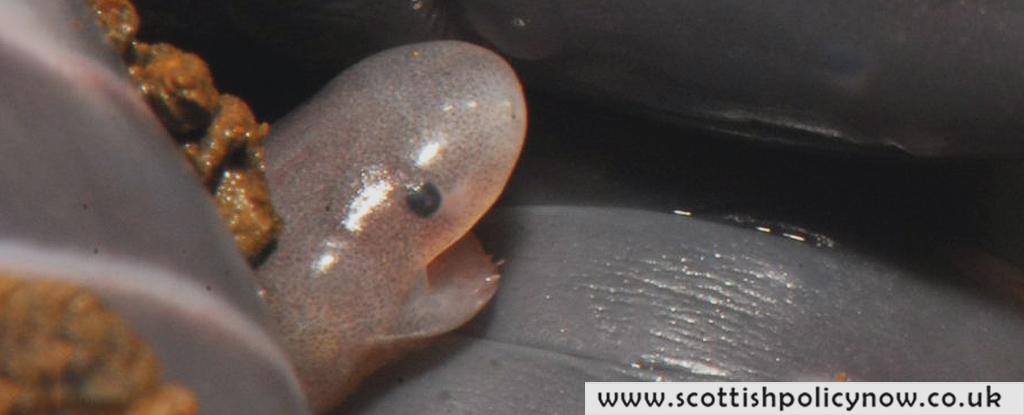Squirming, pink, and worm-like, hatchling caecilians mewl in high-pitched clicks as they wriggle towards their mother’s behind. There, they cluster in writhing piles, mouths probing demandingly at her rounded rear end for a sip of milk.
Seemingly in response to her offspring’s physical and vocal stimulations, the mother lifts her tail and oozes a white, viscous fluid from the mother’s cloacal vent. The young amphibians hungrily gobble it up.
While not exactly unprecedented among these strange-looking amphibians, the recent discovery of milk production by one of the order’s egg-laying species has captured the attention of experts who thought they’d seen it all.

“They cry, they emit sounds, click click click click, it’s like a begging behavior,” Butantan Institute zoologist Pedro Mailho-Fontana told Sofia Quaglia at The New York Times.
Watch the footage below and hear sharp clicking sounds made by the babies for yourself.
Distant relatives of frogs and newts, caecilians are an order of venomous, legless, nearly (or completely) blind amphibian found in tropical soils, where they stalk and consume other burrowers. With their cylindrical bodies stretching up to 45 centimeters (18 inches) in length they look awfully like their most common prey: worms.
A subterranean lifestyle shaped these unusual features, while keeping caecilians so well hidden they’ve remained one of the least understood of all backboned animals.
Mailho-Fontana and colleagues captured the unexpected nursing behavior on film after collecting a number of female ringed caecilians (Siphonops annulatus) and their young from Brazil’s Atlantic forest. On closer inspection the researchers located specialized glands in the caecilian mother’s oviduct walls that produce a fat and carbohydrate rich milk, similar to ours.
The researchers found the captive babies’ stomachs were full of fluid, confirming they were indeed nursing. In just the first week, the babies pile on up to 130 percent of their hatchling body weight. As with human babies, this milk likely also contributes to the microbiome and immune system of the baby caecilians.
During most of the 242 hours of footage the dedicated mothers remained curled up, rarely moving, not even to feed themselves. Every few days the moms also sacrifice skin off their own back to supplement this liquid diet too. They lost about 30 percent of their body mass during their two months of parental care.
Mammals were once thought to have a monopoly on milk, but recent discoveries mean this trait can no longer be regarded as a class-exclusive characteristic. We can now add caecilians to a growing list of animal groups that feed their young with bodily secretions, along with jumping spiders, Pacific beetle cockroaches and vulva-squirting roundworms.
“We have now discovered a vertebrate system in amphibians that has developed similarly comprehensive brood care mechanisms as known for mammals,” says Stuttgart’s State Museum of Natural History zoologist Alexander Kupfer.
There are other examples of amphibian nursing beyond S. annulatus, including 20 other caecilian species, a frog (Nimbaphrynoides occidentalis) and salamander (Salamandra atra). Those species all give birth to live young though.
This makes the ringed caecilian the only known amphibian to produce milk while still laying eggs – essentially the platypus of the amphibian world. Some species of caecilians are known to bear live young, so the ringed caecilian appears to be an intermediary step between the live-bearers and their egg-laying brethren.
“Nature is very creative,” Marta Antoniazzi told Geof Brumfield at Wisconsin Public Radio, “Sometimes it gives the same solution to different groups of animals.”
This phenomenon is called convergent evolution.
Parental care is costly but clearly has massive benefits given it keeps cropping up, even in the most unlikely creatures.
This research was published in Science.








